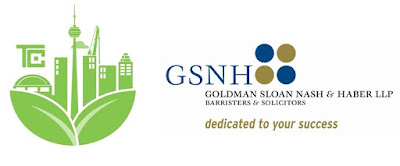Green Building Design Fundamentals (Part III - Subcontracts)
When it comes time to put shovel in the ground on most Green Building projects, the greatest challenge can sometimes be the execution of the contract and subcontracts according the the specified design. Knowing your contract documents and the language that governs the products, materials, and procedures to use can be overwhelming the first time around.
Much like the development of a new building code (See OBC 2012) Green Building standards can catch trade contractors off-guard, especially at the pricing stage. Innocent looking specs on a product may not be caught at the bid stage, and product availability and cost can create huge headaches for contractors pricing projects aggressively in today's competitive environment. Here are some tips to avoid common estimating errors on Green Building Projects:
Check the General Requirements (Division 1)
Just about every Green Building Project will make it very clear in Division 01 that there are special product selection procedures to follow. This is where you will find any extra paperwork or documentation on requirements for green materials.Read Your Division CAREFULLY
We've all been there, it is 1:37 and the bid closes at 2:00. You need to get a price in but you just can't get a number from a specific subcontractor or supplier. If you know you are working on a Green Building Project (see above), then make sure you pay careful attention to the products and materials called out in your spec sections. Be wary of generic language that says "Paint to be VOC compliant" or "..use high recycled content.." or worse yet "Use LEED compliant materials". If the consultant needs a green material, it is their responsibility to identify materials that are acceptable to them. If the specifications do not offer any clear way of identifying the material, then it needs to be made clear when you are submitting your price what materials and products you have based your bid on.It will be important to know at this stage if there are any price premiums for these materials, or if they are readily available within the schedule. The sooner you know and can act on it, the more likely you'll succeed in finding a suitable alternate in time.
Practice Good Record Keeping
One of the most difficult aspects to completing LEED Certification for most trades is the tracking and submission of proper documentation. Many Green Building Rating systems (not just LEED) rely on paperwork to document materials, procedures, waste generation, and overall compliance. Your best bet to make sure the consultant isn't chasing after you months after you have completed your work on site is to keep good records right from the start of the project. These are good practices regardless of the "greeness" of the project:- Keep waybills/packing slips from all suppliers
- Take Photos to document site progress (this is good even for sub trades)
- Get product lead letters (most manufacturers are aware of Green Building Requirements and like to boast anyway)
- Ask consultants up front if there are any special documentation forms they require before you start





Comments
Post a Comment